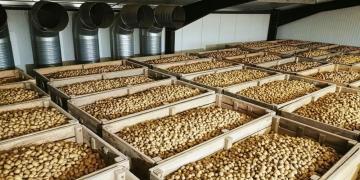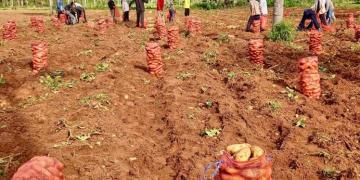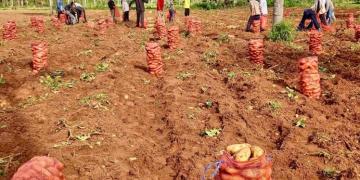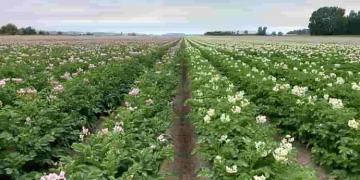Argentina: The Andean potato, a driver of innovation and agricultural development in Mendoza
From Mendoza, Quipu Cultivos Andinos focuses on a diverse potato that boosts agriculture and the local economy. Learn about its varieties and sales locations.
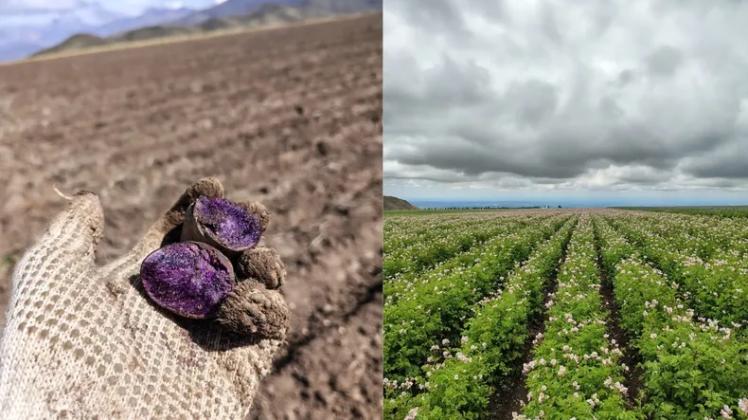
Argentina stands out for its potato production , a key agricultural crop. Provinces such as Buenos Aires, Córdoba, Tucumán, and Mendoza lead the way. Mendoza province stands out for its volume and diversity: it produces potatoes of various sizes, shapes, and colors, reflecting its richness and economic value.
In this context, Sitio Andino spoke with Eduardo Barraud, a representative of Quipu Cultivos Andinos, who promotes the cultivation of a very particular variety of potato in the Uco Valley, specifically in Tupungato. On his land, he cultivates 11 hectares, dedicated to the production of Andean potatoes, a distinctive type of potato characterized by its colors, shapes, and unique properties.
Barraud explained that the project began approximately nine years ago, after a trip to Peru where he experienced a profound exposure to the variety and richness of potatoes: "different colors, flavors, textures." This experience was the driving force behind what is now Quipu Cultivos Andinos.
The unique development of Andean potatoes from the land of Mendoza
To carry out the initiative, they established a joint effort with INTA (National Institute of Agricultural Technology) (which has a significant role in the province’s agricultural development ) to generate seeds by crossbreeding different potatoes. "Incredibly, new varieties can be obtained through natural crossbreeding of potatoes," Barraud explained, adding, "There’s no genetic manipulation; everything is natural."
Although they initially worked in Uspallata, they currently grow potatoes in Tupungato. “We are at the foot of the mountain range, 2,500 meters above sea level. This is essential because we always seek altitude: altitude provides significant thermal amplitude and unique solar radiation,” he explained. These conditions, he explained, are necessary to preserve the intense colors of the potatoes: “Ours, if grown on the plains or nearby areas, lose color over time.”
A product that seeks to reach more homes
Andean potatoes are a rare variety. The first interested parties were restaurants, which initially positioned the product in the gourmet segment. However, Quipu is seeking to expand its reach: "We want people to consume it in their daily lives," Barraud stated.
He compared the case to the cherry tomato, which began as a gourmet product and, over time, became part of the everyday offerings of supermarkets and greengrocers. The prediction is that something similar will happen with this potato variety.
The cultivation cycle of the Andean potato
According to the producer, the Andean potato’s growing cycle is longer than that of traditional potatoes: it lasts 150 days, compared to 100 or 110 days for conventional varieties. "We plant in early November and harvest in February or March," he explained.
The reason for this difference is the search for a unique product: "distinctive flavors, different colors, and special nutritional properties. Because they are colored, these potatoes contain more vitamins than traditional ones."
The potato in Mendoza: between tradition and innovation
This growth is also reflected in foreign trade. According to the report on Mendoza’s exports prepared by Sitio Andino, prepared or preserved potatoes represent 6% of the province’s total exports, consolidating their position as a key product within Mendoza’s agro-industrial offering.
Barraud highlighted the growth of potato cultivation in Mendoza following the arrival of Simplot, which promoted technological advancement. “The factory demands high standards. We’re moving forward with pivot irrigation, which improves health,” he said. He clarified: “Not just any potato is suitable for frying; you need a superior quality one.”
A difficult year for the potato producer
Despite technological and commercial progress, 2025 is proving to be "a very tough year for fresh potato producers." The oversupply caused by a good harvest, combined with a drop in consumption, led to a sharp drop in prices. "There was a lot of supply and little demand, and the price inevitably fell," he explained.
"This is a reality that is in line with what is happening throughout the fruit and vegetable sector," Omar Carrasco warned a few days ago in an interview with this newspaper.
The potato: the basis of the national diet and economy
Although the current economic climate makes consumption difficult for many families, potatoes remain a fundamental crop both nationally and regionally.
Potatoes have historically occupied a central place on the Argentine table, and today—with the support of initiatives like Quipu Cultivos Andinos—the variety of options continues to expand.
Furthermore, access to the product is no longer limited to restaurants: Andean potatoes can be found at various points of sale in Mendoza, making them increasingly accessible to ordinary citizens.
Fuente: Traducido por Argenpapa de: sitioandino.com.ar

